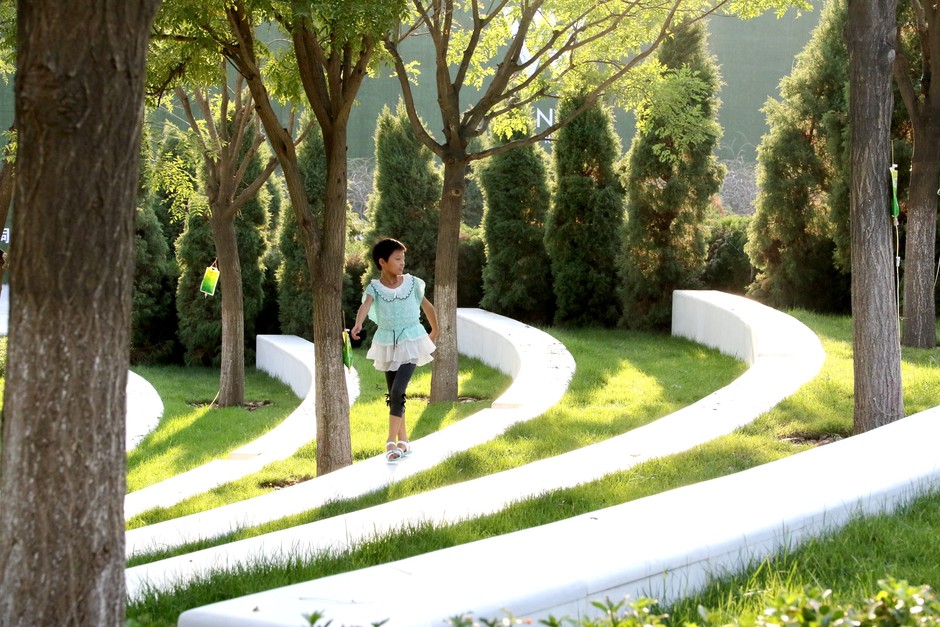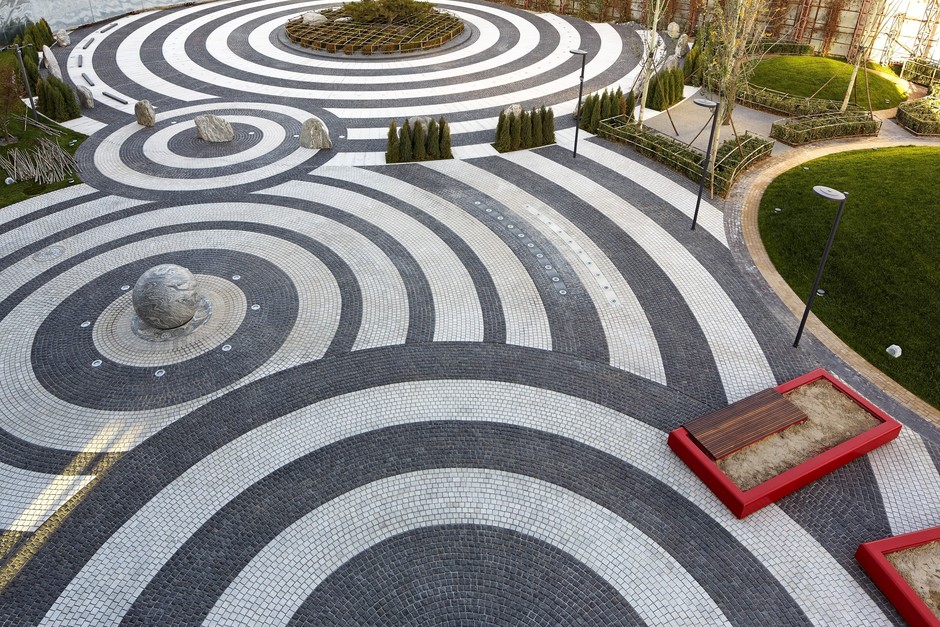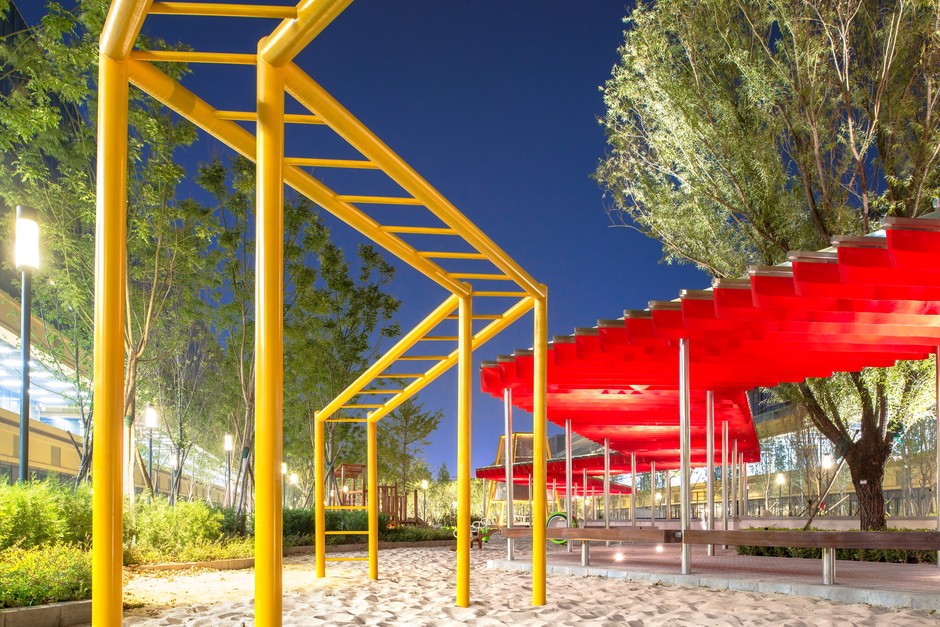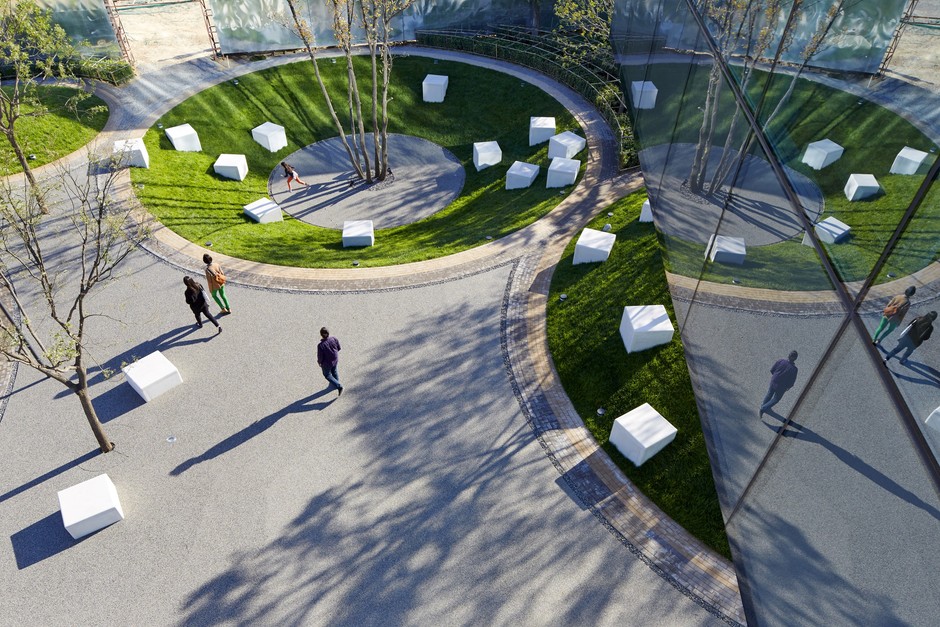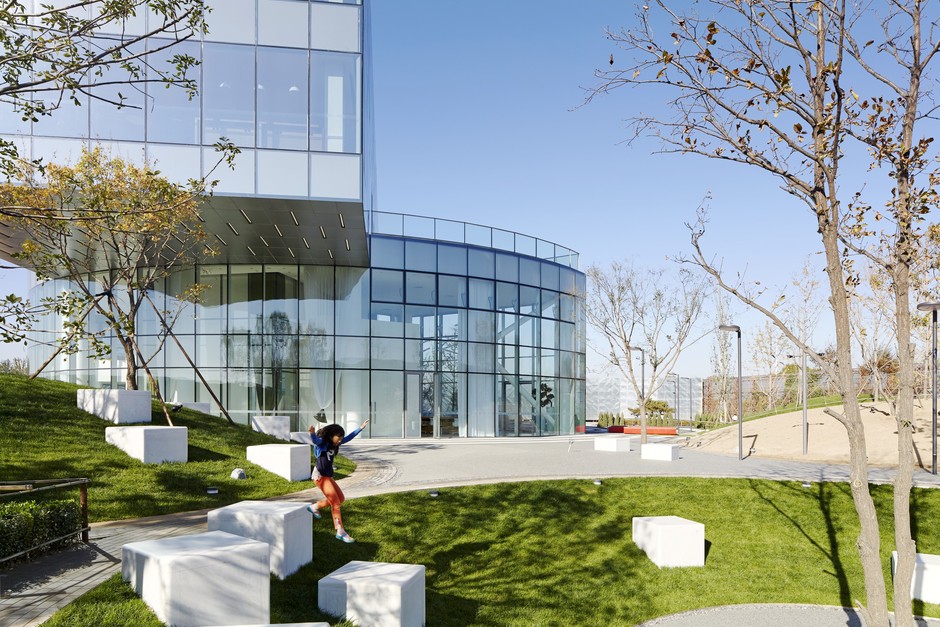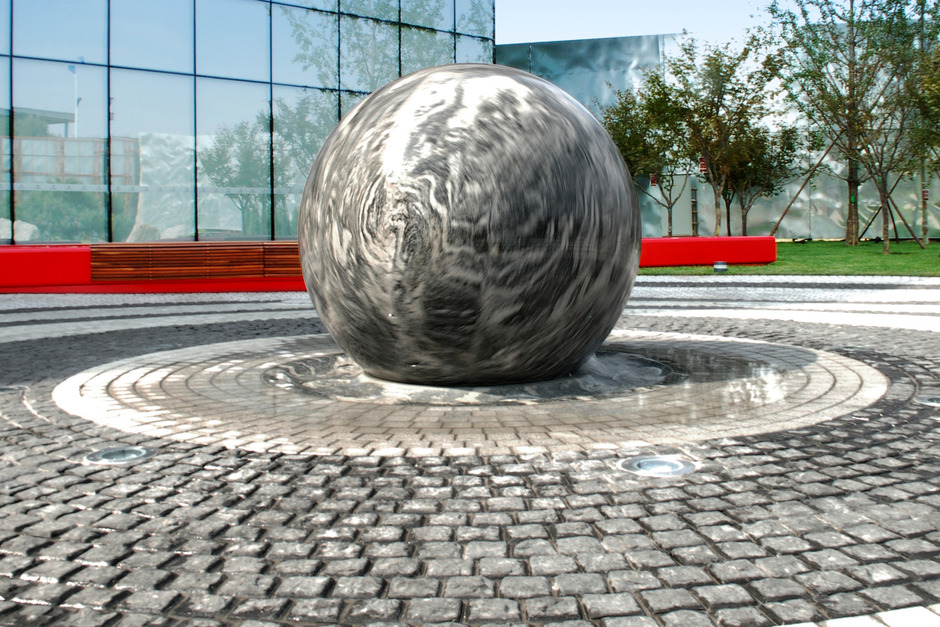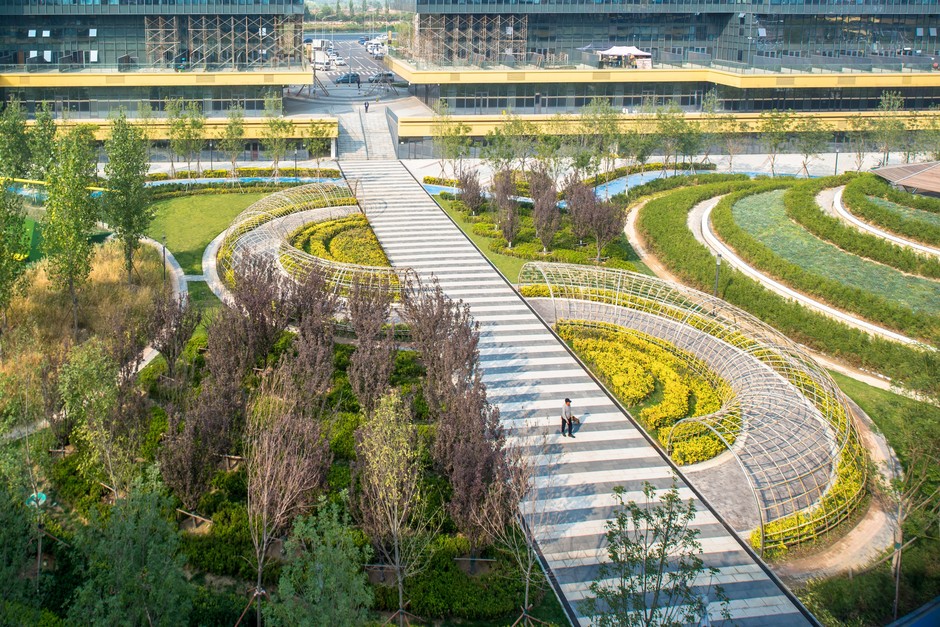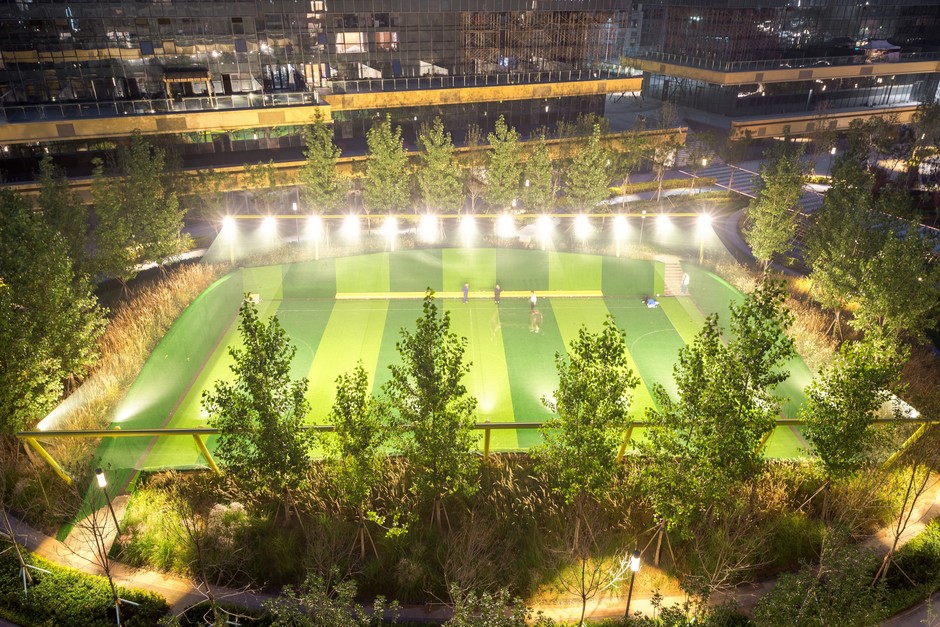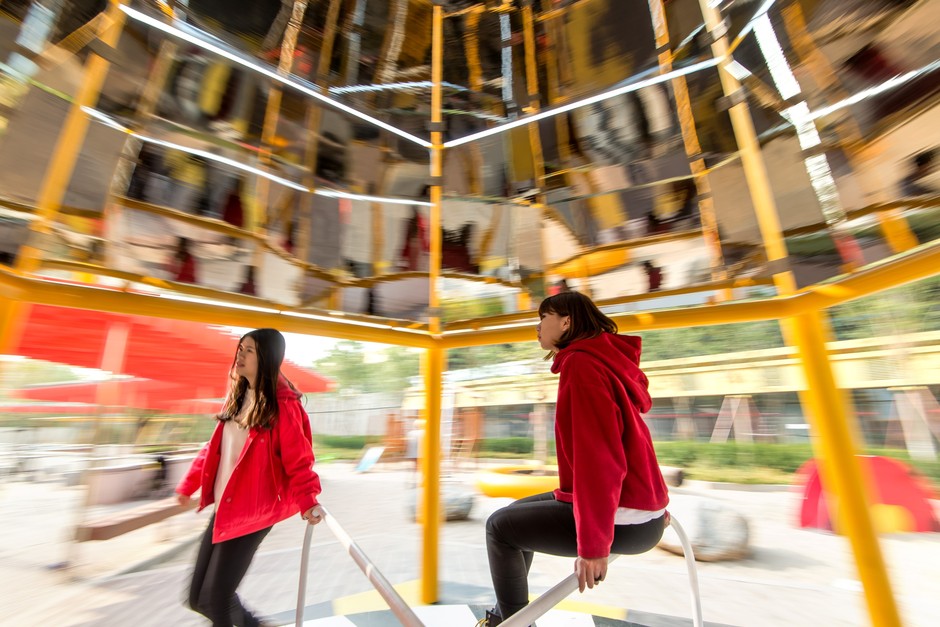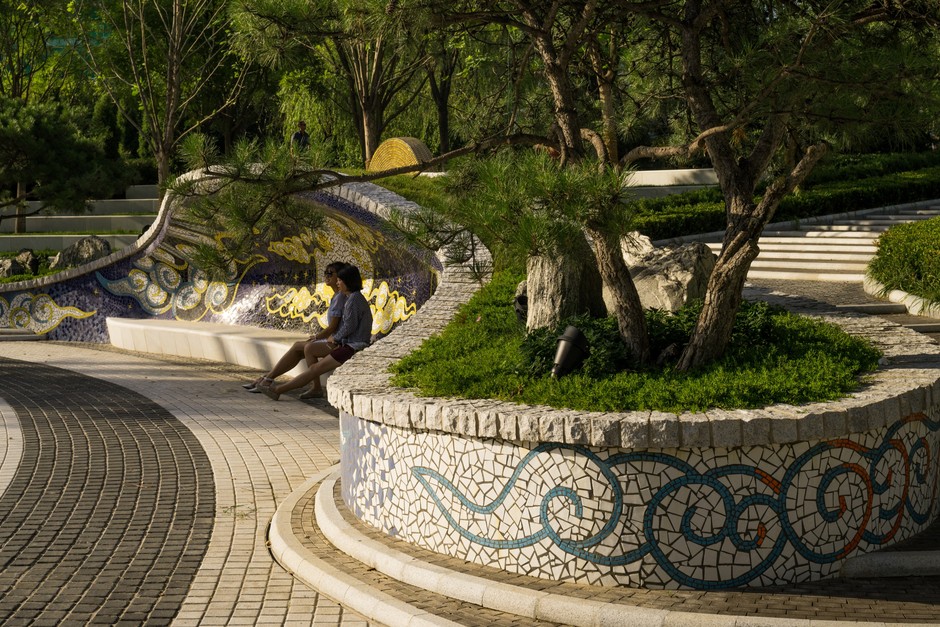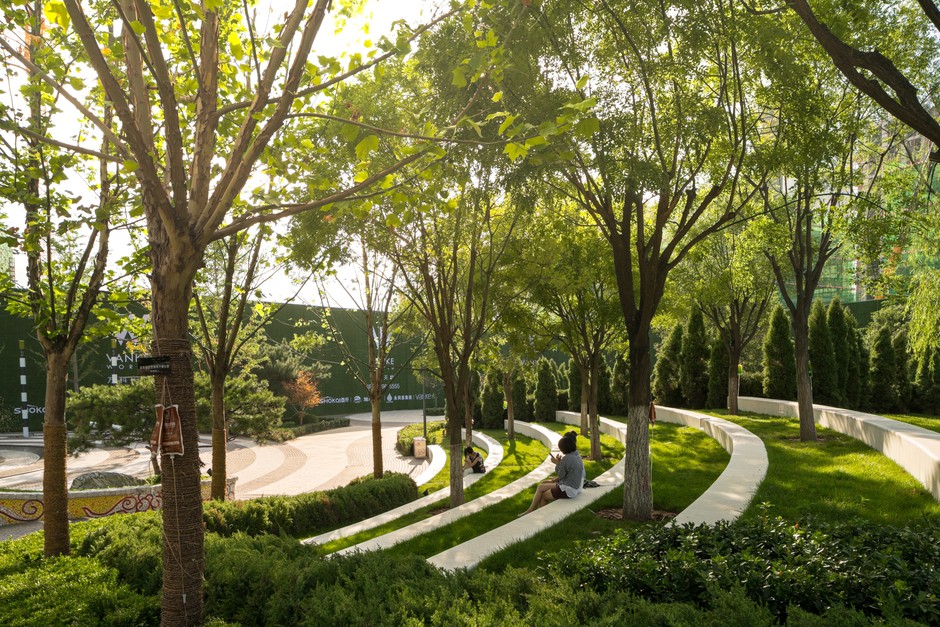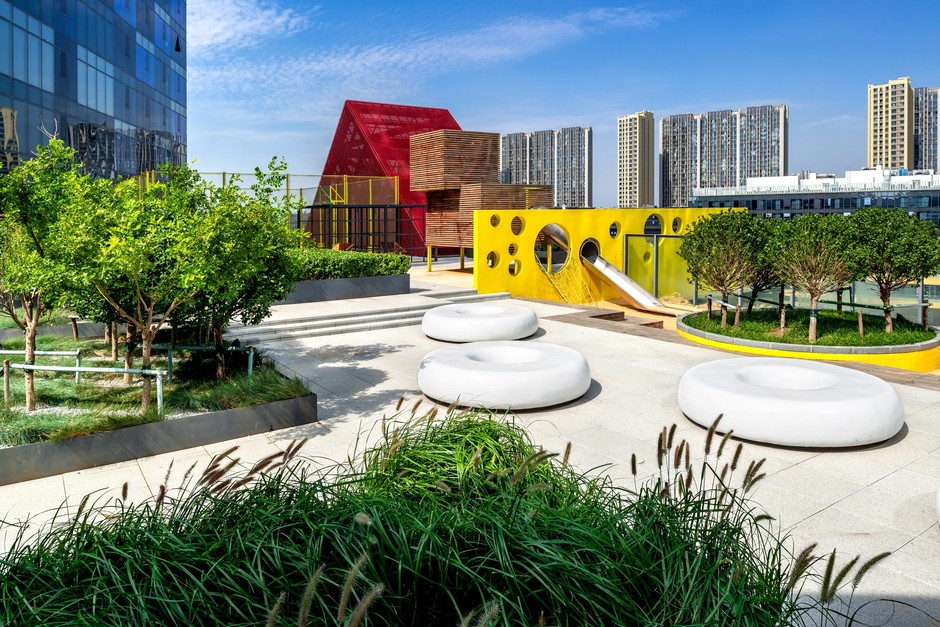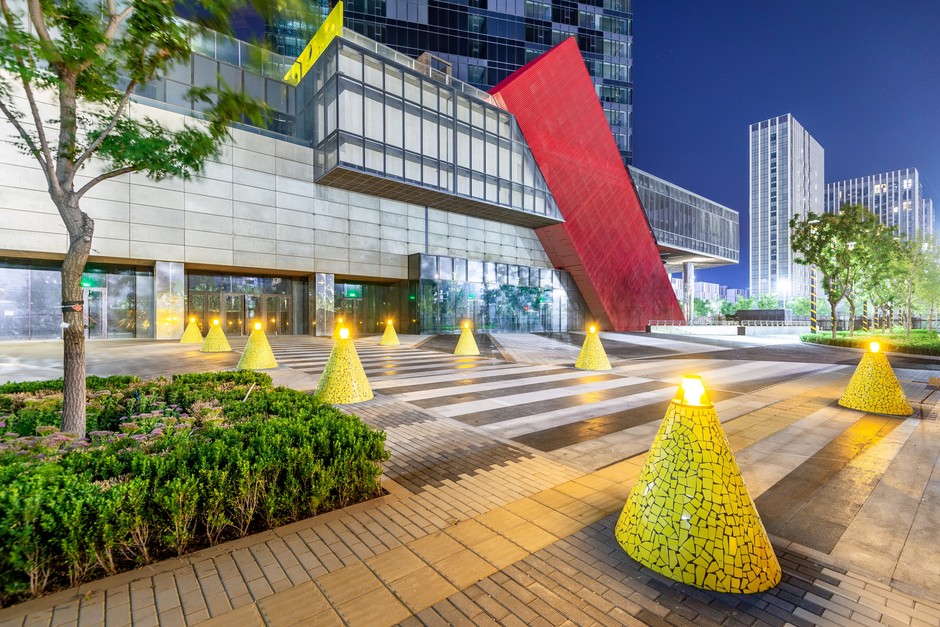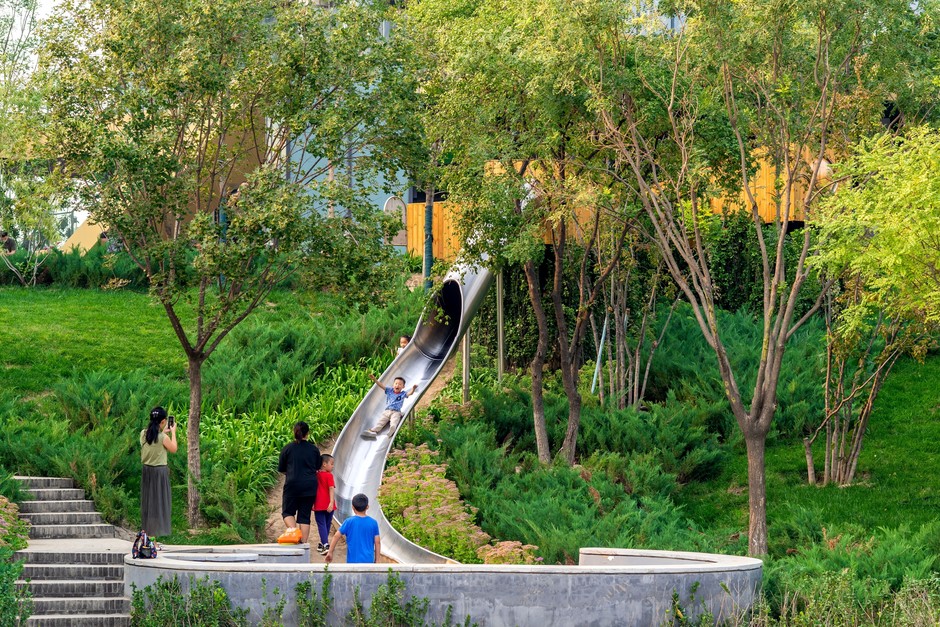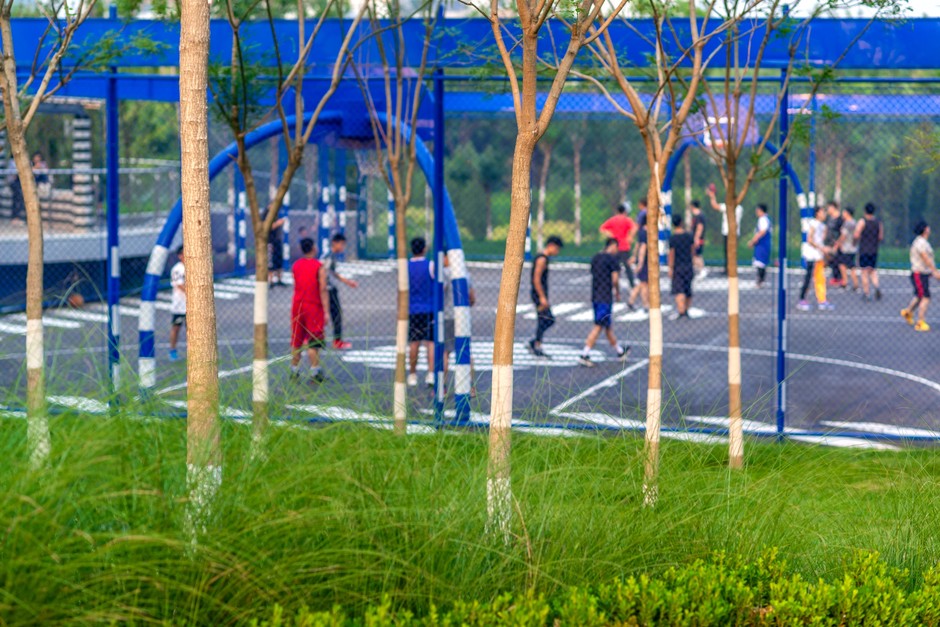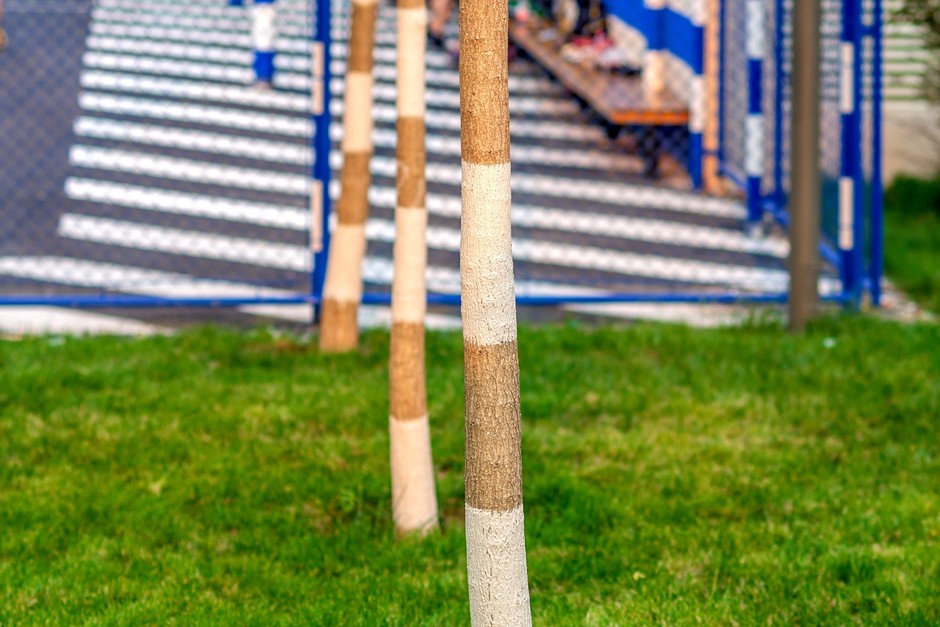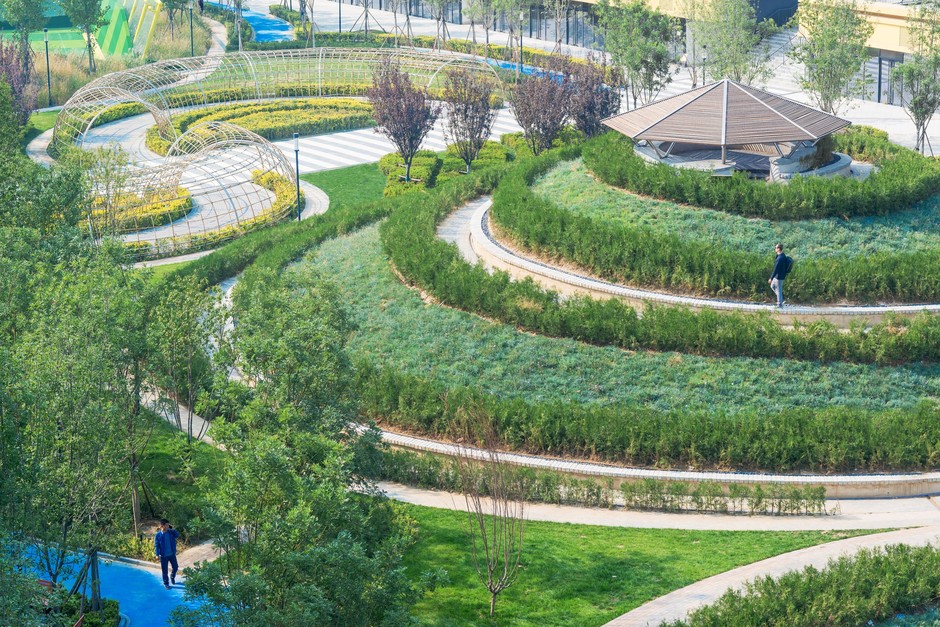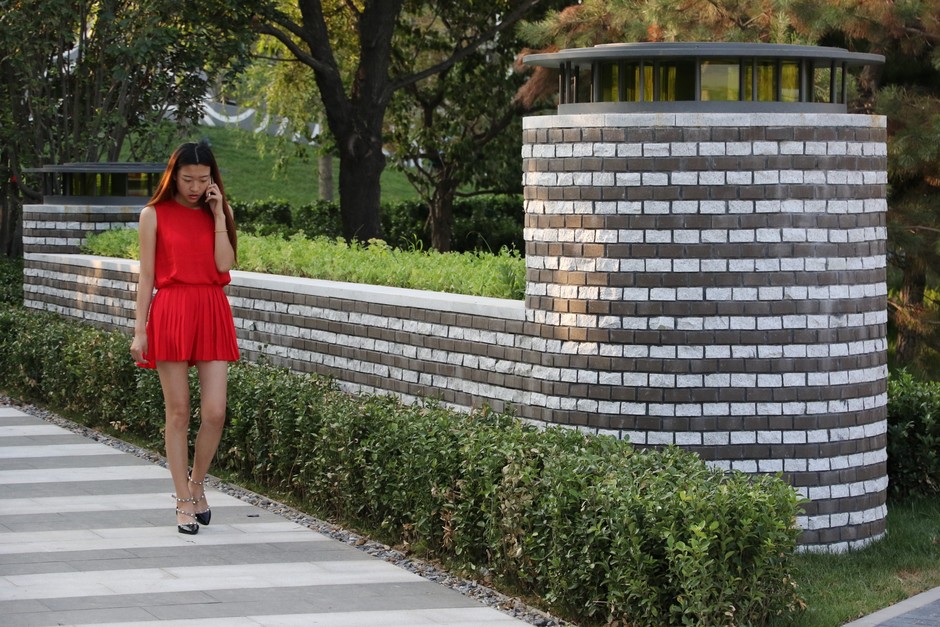
Daxing Green Hub and Park
Beijing
PROJECT INTRODUCTION
The Daxing Park site is located on a primary subway line directly between the center of Beijing and the new seven-runway Daxing Aiport. Planned carefully by the local government as a central park, the 800m long green space is developed in a public/private partnership. Underground parking structures, subway links, bus hubs, and retail are planned to allow the park space to function as a green transport hub.
PHASE I: A ROCK GARDEN ENTRANCE
The design utilizes a language of circles to settle the plan elements. A hardscape zone of black and white granite cobbles connects the mass of the architecture with a circular corner plaza of equal visual weight. Twenty-seven large granite boulders paired with Sabina chinensis define the edge of the circular plaza. The boulders also mask a temporary parking requirement by acting as curbstones.
Visually the composition of concentric radiations of the hardscape zone forge a strong connection with the compositions of the Zen rock gardens. At the same time they create powerful centers and gathering spaces. The center of the parking plaza again reinforces the Zen tradition: an asymmetrical composition featuring a sculptural Pinus tabulaeformis, regular stripes of Buxus, and two large low boulders. Elsewhere, moving towards the architecture one encounters a 7.6 ton fengshui Ball. The granite waterball glides silently on a thin film of water, a supersized reinterpretation of a kitsch Chinese garden element.
The softscape portion of the project interprets the circular plan elements as landforms. A slender side path to the architecture splits a great mounded landform with astonishing visual force. The exposed sides of the sliced mounds are detailed in an arching brick pattern, suggesting the mounds ruptured from the earth prior to the slice. A lurid field of Salvia farinacea unifies the sliced halves of the mound into a whole. Beneath the cantilever of the architecture the landscape defers, inverting the mound with a multitrunk Quercus mongolica at the center. A scattering of 19 white marble cubes populate the underside of the architecture, luring visitors to the seating within the softscape zone.
PHASE II: THE FORMAL EAST ENTRANCE AND SUNKEN PLAZA
One enters the park through the Double Fortune Plaza, the main entrance path bisecting two perfectly symmetrical 20m circular plazas. The focal points of each plaza echo their mirror image quality: two Salix matsudana cloned from the same ‘mother’ occupy the centers.
A slow staircase (700mm treads with 70mm risers) descends 4.7m into the space of the park, sheltered by an allee of Platanus. After a gentle curve, the staircase presents a view of a sunken plaza beyond the dazzling trecandis of the Sun Moon Bench. Handcrafted in BAM’s studio and installed on site by BAM’s designers, the Sun Moon bench features a cloud-shrouded moon in starlight from the plaza side. From the staircase side the Sun radiates in concentric rings creating wind which in turn engenders the traditional Chinese cloud patterning.
The sunken plaza itself acts as another focal point for park activities in high-contrast black and white cobble paving. A black-hole like vortex in cast iron occupies its focal center point and ejects a modest water fountain in the summer months. A fancy paving grid of light granite with white carved marble insets borders the sunken plaza. Each of the carved marble insets represents one of four elements: time, space, fertility, or chaos.
The visual agitation of the high contrast sunken plaza draws the viewer’s eyes up to the calmer scenes of the park slopes beyond. A backdrop of white slab marble amphitheater seats punctuated by mature Saphora japonica embraces the plaza. The marble benches create an inviting place to nap in the shade or watch activities unfold on the plaza below. The amphitheater abuts the Star Maze, a pentagonal star shape extending the metaphor of the heavens. Crushed granite mazed paths snake between soft walls of 2m tall Platycladus orientalis radiating outward from a central Acer truncatum.
大兴云公园
北京
项目介绍
大兴公园场地位于北京市中心和大兴新机场之间的一条主要地铁线上。最早被当地政府规划为一个中央公园, 这个800米长的绿色空间将由政府和私人企业共同开发。地下空间规划有停车场、地铁连通、公交枢纽及商业,使公园形成一个绿色的交通枢纽。
一期:岩石庭院入口
设计利用了圆形的设计语言来设置平面元素。一个黑白相间的花岗岩石丁组成的硬质景观区域连接到建筑体及其视觉重量相等的圆形转角广场上。27个巨石及其配对的小圆柏定义了这个圆形广场的边界。这些巨石同时也作为满足临时停车要求的挡车石存在。
硬质景观同心圆的组成与禅意花园的组成,在视觉上建立了非常强烈的联系。同时也创造了强大的中心感及集散空间。停车广场的中心也强化了禅意的传统:一棵造型油松,规则条状种植的大叶黄杨篱及两个巨大匍匐的巨石构成不对称的特色元素。当走向建筑时,会遇到一个7.6吨重的风水球。花岗岩风水球静静的在薄薄的水面上转动,用一个大手笔来诠释一个通俗的中国造园元素。
项目的软景部分是用微地形来表达的。通向建筑的一条细长的小路劈开了一座小山丘,给人带来了强烈的视觉冲击。小山丘的切断面处是一道拱形的砖墙,好似在展示如何从土丘到被切开的过程。一片映入眼帘的蓝色鼠尾草花海将两片半山丘统一成了整体。在悬挑的建筑下,景观延伸至一个如反向山丘的下沉庭院内,一棵丛生蒙古栎伫立于中心。19个白色大理石的白色正方形座椅散落在建筑之下,吸引游客到这片软景区域中休憩。
二期:东部入口和下沉广场
一进入公园将穿过两个幸运广场,主入口通道从这两个完全对称的直径20米的圆形广场中间穿过。广场的圆心各栽种一株仿若克隆的馒头柳,使得两个圆形广场就像彼此在镜中的映像,一般无二。
一组尺度宜人的台阶(踏步700mm宽,踢面70mm高)缓缓的向下穿过4.7米的高差直达公园的深处,两侧的法桐营造出林荫大道的氛围。经过一个平缓的转弯,一个以太阳和月亮做为主题装饰图案的花坛石凳,以及位于其后的下沉广场展现在眼前。整个座椅的手工艺部分都是在BAM工作室完成,并由设计师在现场指导安装。面向下沉广场一侧是清云遮月星光熠熠的夜空,而面向台阶一侧则仿似阳光普照,引来清风徐徐,衍生出了传统的云纹图案。
黑白相间的花岗岩石丁铺设而成下沉广场是公园活动的另一个焦点。广场中心一个镂空花纹的黑色旋涡状井盖成为了焦点,而且在夏天时作为喷泉的泉眼。雕刻着有趣纹理的浅色优质大理石方块,镶嵌在白色的花岗岩间围合了整个下沉广场。大理石上面的纹理有4种类型,分别代表了时间、空间、繁衍及混沌。
下沉广场高对比度的视觉震撼,将游览者的视线引至另一边宁静的草坡场景。白色大理石组成的弧形阶梯形成了独特露天剧场,与穿插种植在座位间的国槐环抱着下沉广场。大理石坐凳给人们创造出一个舒适的休憩场所,可以在树荫下打盹或观赏下沉广场上的各种活动。露天剧场毗邻着星形迷宫,五角星的形状也延续了天空的寓意。迷宫以中心的元宝枫向外辐射,花岗岩碎石铺就的小径在2米高的侧柏树墙中穿过。
